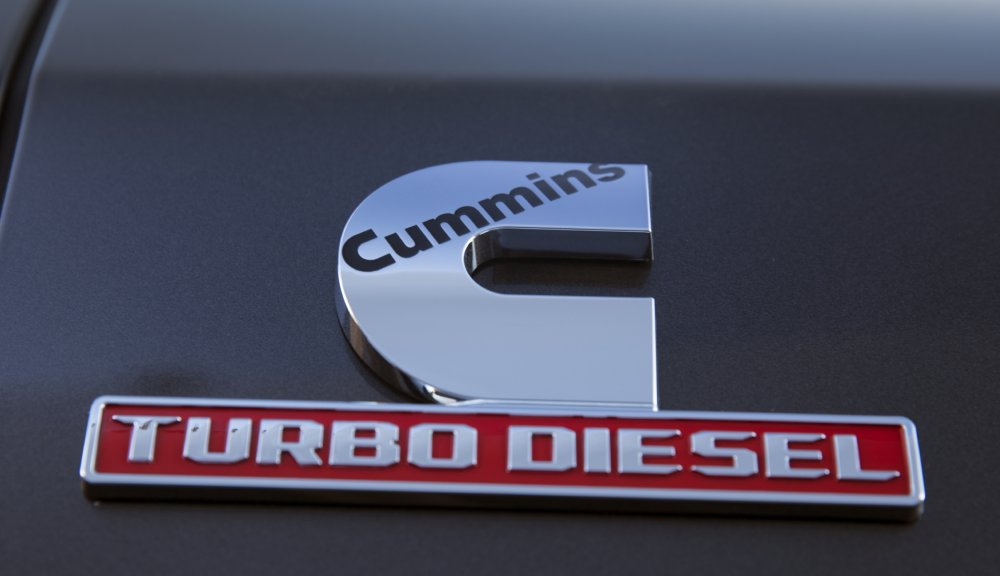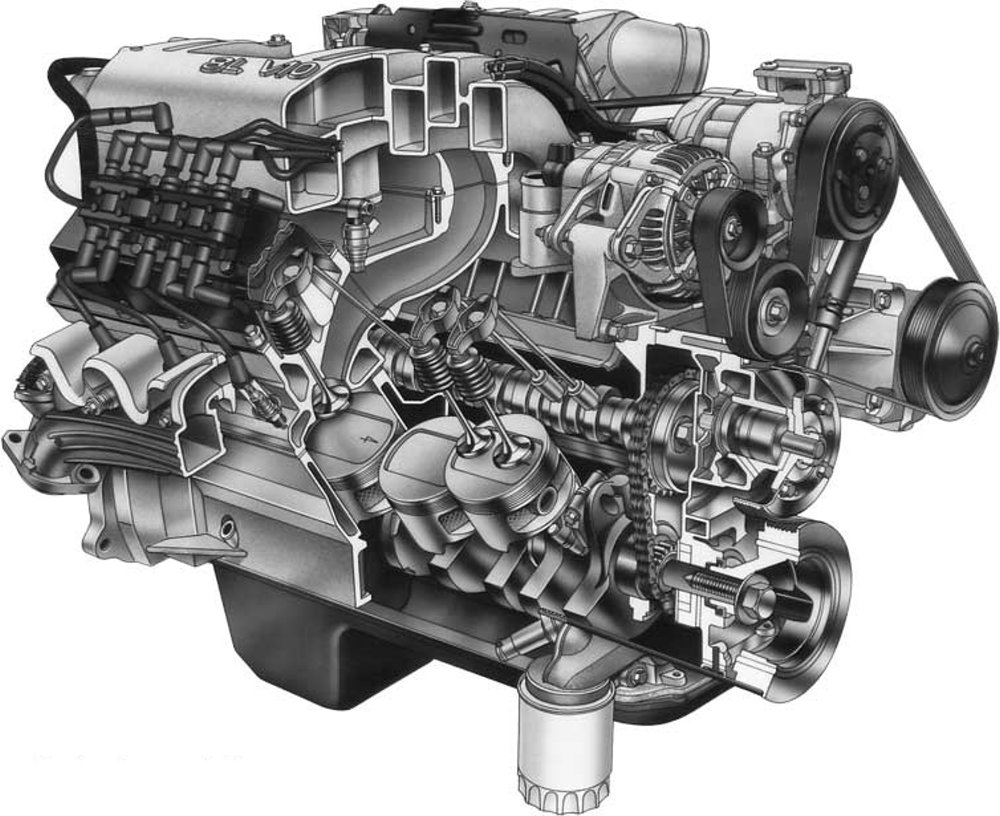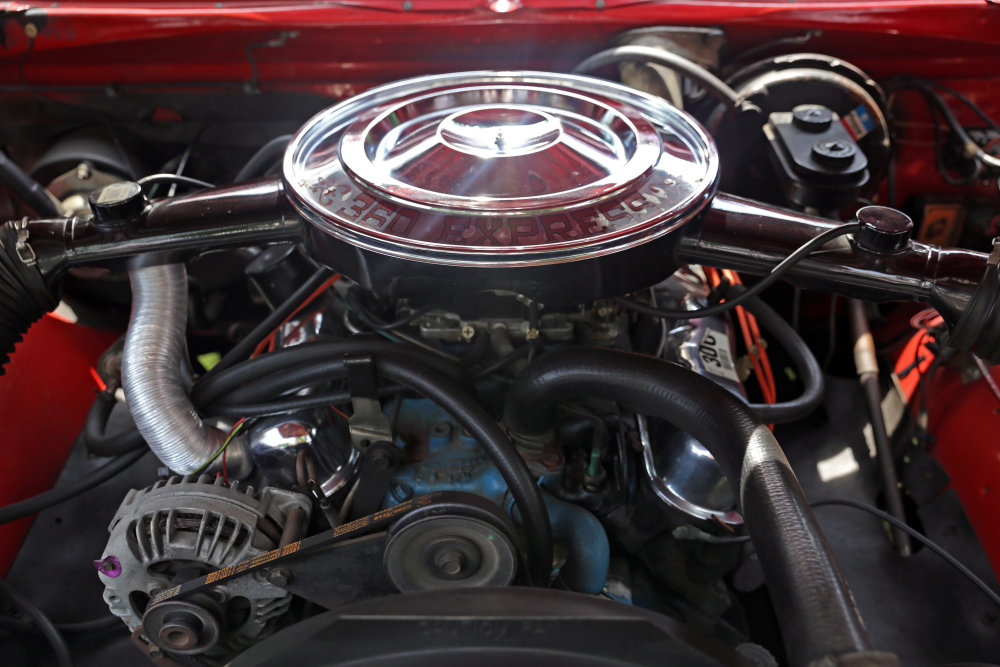Six of the Best Ram Truck Engines of All Time

Ram trucks have featured some legendary engines, from the Magnum to the Hemi to the Cummins.
Since the Ram brand separated from Dodge for the 2010 model year, there have been seven different engines offered across the lineup. The two mainstays are the 5.7-liter Hemi and the 6.7-liter Cummins Turbo Diesel, and each of these have been offered for the majority of the Ram brand existence. However, when Ram was still a Dodge model, it relied on many other engines in its crescendo to what the brand that it is today.
Today, we bring you a look at what we believe are the six best Ram truck engines of all time, starting back in the 1970s. If you have owned many Dodge Ram trucks, the odds are good that you have experienced more than one of these power plants. Not only were they all key to the success of the Ram truck over the years, they were all very popular engines during their time.
1. 1971 – The LA 360
The 360-cubic inch V8 based on Chrysler’s LA small block architecture was introduced in 1971 for cars, trucks and vans, but by 1981, it was no longer offered in any cars. When the carbureted 360 was introduced, it was fitted with a two-barrel carburetor and it offered a combination of 175 horsepower. It was the most powerful small block truck engine offered during its lengthy run and when the big block engines died out in the late 1970s, the 360 became the most powerful engine in the lineup that was then known as the Dodge Ram.
From 1971 through 1992, the LA 360 was one of the more popular engine options in the half-ton (Dodge) Ram. For the 1978 and 1979 model years, the Lil Red Express relied on a specially prepared 360 that delivered 225 horsepower (shown above). As a result, the unique D150 was the fastest American vehicle in 1978 in a 0-to-100 sprint. Just to be clear, that isn’t the fastest truck – that is the fastest American vehicle for 1978. It was quicker than the Corvette, Mustang, Camaro, Trans Am and everything else.
Come 1989, the 360 ditched the carburetor in favor of fuel injection, leading to a 20-horsepower jump. With 195 horsepower, it was more powerful than the Ford F-150 or Chevy Silverado from the same year.
After more than 20 years of service, the LA 360 was left the Ram lineup in 1993, when it was replaced by the new Magnum 360.
Wikipedia Commons By Mr.choppers – Own work, CC BY-SA 3.0
2. 1992 – The Magnum Era
After relying on the LA-series engines to power the Ram pickups for more than two decades, Chrysler introduced the Magnum V8 engines in 1992. The Magnum engine architecture was based closely on that of the LA-series, going so far as to stick with the same engine sizes. The 318-cubic inch Magnum V8 was introduced in 1992 and the 360-cubic inch version hit the market in 1993, but neither engine shared many components with the similarly-sized LA V8.
The 318-cubic inch Magnum V8 that was introduced to the Ram truck lineup for the 1992 model year offered 230 horsepower and 280 lb-ft of torque. Those are significant increases over the 170 horsepower and 260 lb-ft of torque offered by the LA 318, but the bigger story of the Magnum era was the 360-cubic inch mill.
This larger Magnum V8 delivered the same 230 horsepower as the 318-cubic inch, but with 325 lb-ft of torque, the 360 offered a dramatic advantage in twist for the 1994 Ram 1500. More importantly, the 360 Magnum took well to basic upgrades, so Ram owners in the mid-1990s were able to add significant amounts of power with modifications such as intake, exhaust and an engine tune. In 1998, the 360 Magnum saw its output climb to 245 horsepower and 335 lb-ft of torque.
Like the LA-series V8 engines, the Magnum engines did an excellent job of increasing the popularity of Dodge Ram trucks with their solid stock power and ability to be upgraded with relative ease. However, where the LA engines were in use for more than 20 years, the Magnum V8s only lasted for just over 10 years. In 2003, the 318 was replaced by the 4.7-liter PowerTech SOHC V8 while the 360 was replaced by the introduction of the 5.7-liter Hemi.
The engine shown above was shared to the forum by member CSXFan.

3. 1994 – Ram Heavy Duty V10 Power
During the Magnum era, there were two other engines to carry that name in the Ram truck lineup. One was the entry level V6 and the other was a similar V10 to the one used in the Dodge Viper RT/10. The V10 was created with help from Lamborghini and it came together by combining two 360-cubic inch LA-series engine blocks. The team used six cylinders from one another and four from another, welding them together to create Chrysler’s first V10.
Mind you, the truck version was very different from the one in the Viper. The truck engine has a cast iron block whereas the Viper has an aluminum block. Also, the truck V10 is tuned to provide big power down low, where a heavy duty truck would need it, where the Viper V10 pulls harder on the top end.
The truck V10 was offered in the Ram 2500 and 3500 from 1994 through 2003. With 310 horsepower and 450 lb-ft of torque, this was the most powerful gas engine offered in any truck sold in the United States, making it a popular option for those Ram truck buyers who wanted big power without the high price of the diesel engine package.


